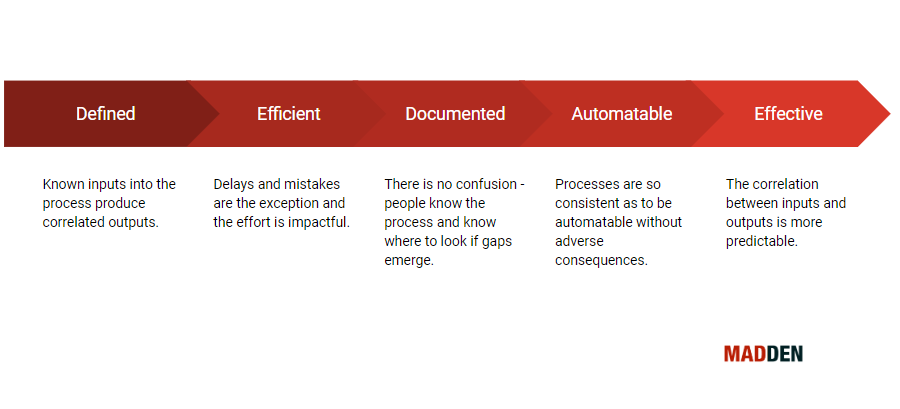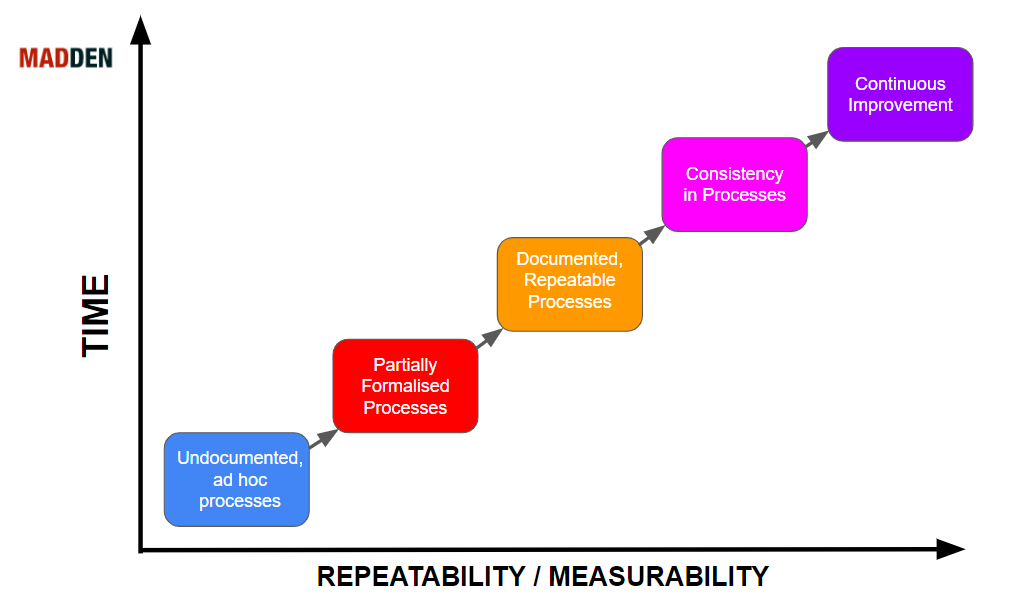Typically in small organisations when it comes to processes, the focus is on simply getting the job done and moving onto the next task at hand. In smaller businesses, the workforce might start with just one or two or a handful of employees – they generally wear multiple hats and on a daily basis grapple with various different challenges, in different contexts and multi-tasking is the norm. Repeatability isn’t, typically, top of mind due to apparent time constraints.
As the business grows, either one of the following happens – (i) more multi-taskers are added to the mix or (ii) people begin to narrow their focus and specialise on a smaller number of tasks. Both of these approaches can be productive but it is likely that (i) above will at some point result in chaos as everybody in the organisation goes about their tasks in their own way and this can result in the following 10 negative impacts on your business:
This lack of cohesion has a damaging impact on team ethos and culture. The unstructured approach to work leads to a lack of accountability and ultimately, the lack of structure and repeatable processes will hinder scalability.
The reaction to this bottleneck in productivity is often to purchase a subscription to a software package that promises to iron out the creases through automation – this rarely has the desired impact. Automating unstructured processes leads to an acceleration in chaos, which is quickly followed by staff ‘going back to what they know’ and operating without the new software system. As well as the sunken cost of a failed new system, this makes team members reluctant to embrace new technology in the future and they can be resistant to any form of change based on that negative experience.
In time, tools can be a significant springboard for productivity and an enabler for growth but they are never a silver bullet and require solid foundation to maximise impact.
Process improvement should not be a disruptor, instead they can and should evolve consistently over time. A mature process will display all of the characteristics below – defined, efficient, documented, automatable, effective. A maturing process will show any of these five characteristics to varying degrees and this will depend on the starting point and intent of the transformation.

The chart below illustrates a common evolution in maturing business processes for most business. The first two stages can happen without a deliberate approach to process improvement but the final three stages will require a formal approach to process improvement and increasing levels of expertise as an organisation proceeds through the stages of maturity:

Maturity models have gone through many iterations – most notable perhaps is Carnegie Mellon’s Capability Maturity Model (CMM) – a framework for improving software development processes. Which model is the best fit for your business will depend on a number of factors including what sector your business is in; how many employees you have; available resources (time/money); desired rate of change and commitment of senior management/ownership.
Remember that not every process needs to be optimal and there is no specific maturity level that a business must achieve – it will depend on your context, goals and overall business strategy. To begin this process, you will need to conduct an assessment of your current level of maturity – this should ideally be done by a third party in order to get an objective assessment of performance. Once this is established, you can agree on a desired level of maturity and create a plan to get there in a specified timeframe – this may require outside expertise but will definitely need quantifiable milestones and employee buy-in to be successful.
To provide the best experiences, we use cookies to store and/or access device information. Consenting to cookies will allow us to process data such as browsing behaviour or unique IDs on this site. Not consenting or withdrawing consent, may adversely affect certain features and functions.